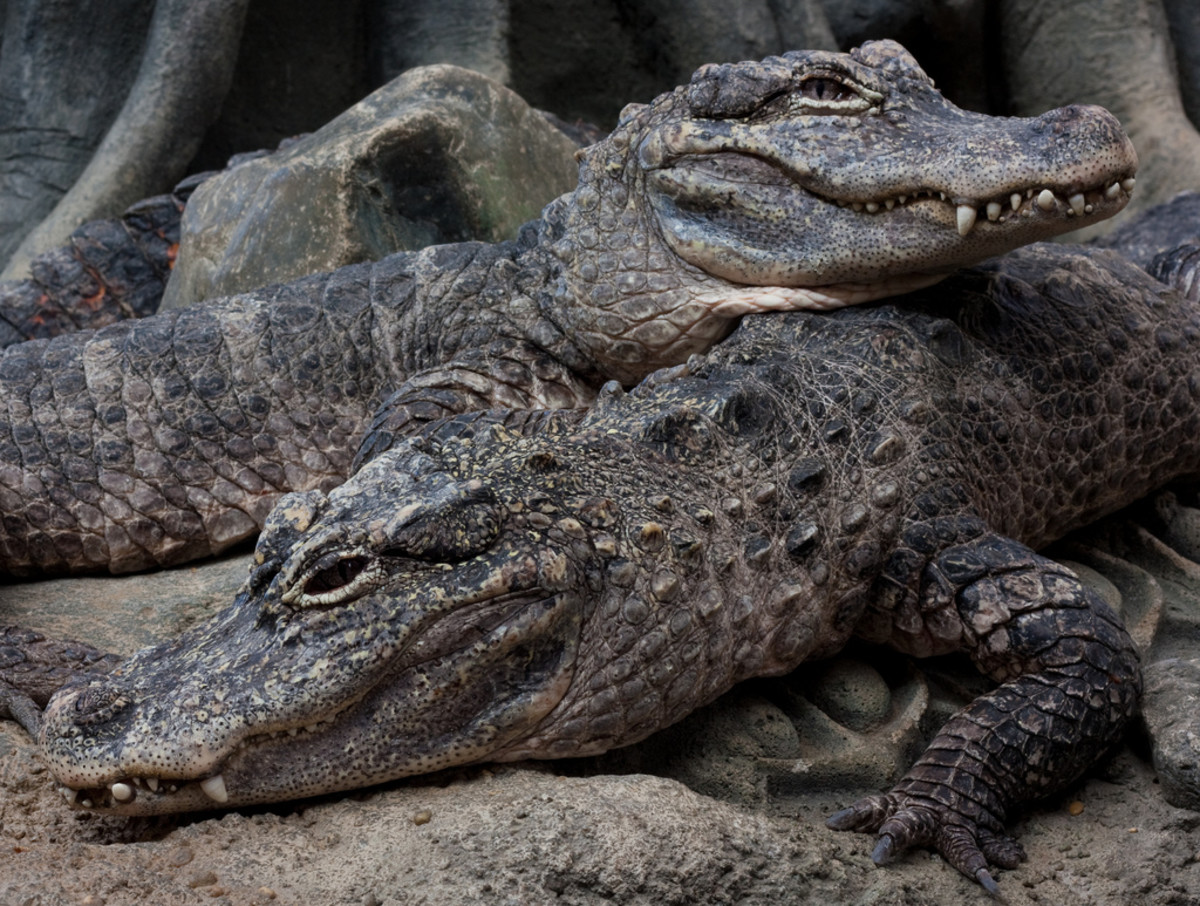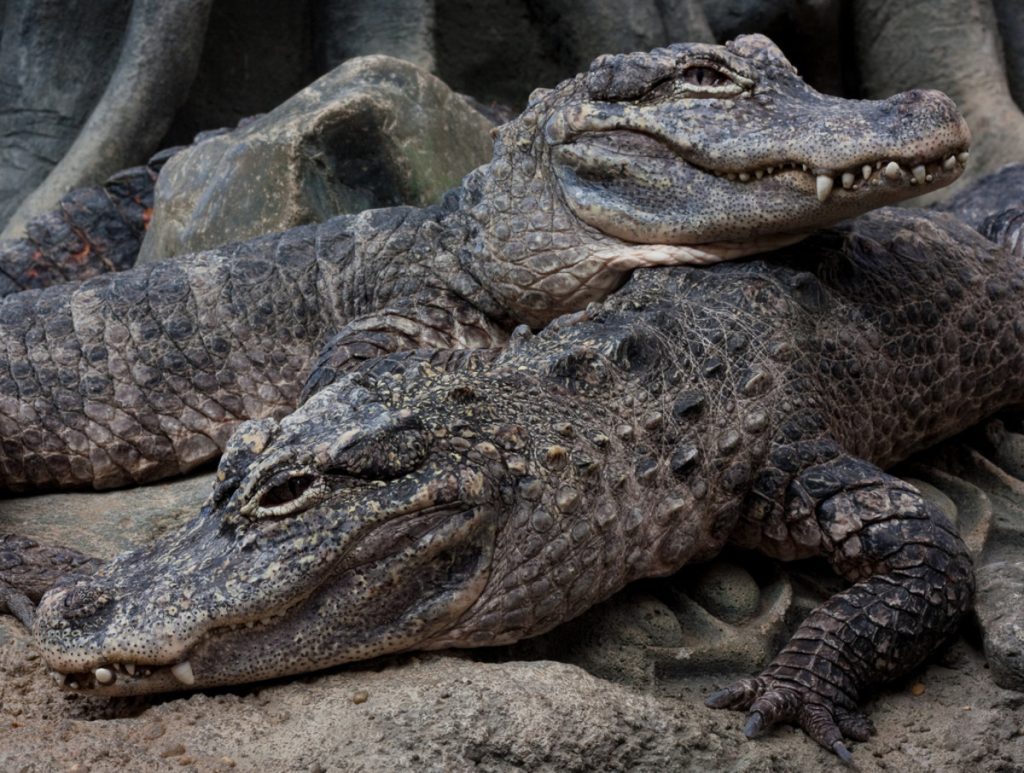Alligators are one of the most fascinating creatures that exist on our planet. They are known for their sharp teeth, scaly skin, and powerful jaws. But did you know that there are different types of alligators? While alligators are often lumped together as one species, there are actually two distinct types of alligators that exist in the world today.
The American alligator and the Chinese alligator are the two types of alligators that are known to exist. While they may look similar in appearance, there are some key differences between the two species. In this article, we will take a closer look at these two types of alligators and explore what makes them unique. So, let’s dive in and discover the world of alligators!
There are two main types of alligators: the American alligator and the Chinese alligator. The American alligator can be found in the southeastern United States, while the Chinese alligator is found in eastern China. Both types of alligators are similar in appearance and behavior, but differ in size and habitat.

How Many Types of Alligators Are There?
Alligators are fascinating reptiles that have been around for millions of years. They are found in the southeastern United States and parts of China. There are two species of alligators: the American alligator and the Chinese alligator.
American Alligator
The American alligator is the larger of the two species, with males reaching up to 14 feet in length and weighing up to 1,000 pounds. Females are smaller, reaching up to 10 feet in length and weighing up to 200 pounds. They are found in the southeastern United States, mainly in Florida and Louisiana.
American alligators are carnivorous and feed on fish, turtles, birds, and mammals. They are important predators in their ecosystem and help control populations of their prey. They are also important economically, as their hides are used to make leather products and their meat is consumed by humans.
Benefits of American Alligators
American alligators play an important role in their ecosystem and provide economic benefits as well. Their hides are used to make leather products, and their meat is consumed by humans. They are also a popular attraction for tourists, which contributes to the economy of the southeastern United States.
American Alligators vs. Chinese Alligators
The American alligator is larger and more aggressive than the Chinese alligator. They have different habitats and prey, and the Chinese alligator is more endangered than the American alligator.
Chinese Alligator
The Chinese alligator is smaller than the American alligator, with males reaching up to 7 feet in length and females reaching up to 6 feet in length. They are found in parts of China and are critically endangered, with only a few hundred individuals remaining in the wild.
Chinese alligators are carnivorous and feed on fish, crustaceans, and other small animals. They are important predators in their ecosystem and help control populations of their prey.
Benefits of Chinese Alligators
Chinese alligators are critically endangered and are important to their ecosystem. They also have cultural significance in China and are a symbol of good luck. Conservation efforts are being made to protect the remaining individuals and their habitat.
Chinese Alligators vs. American Alligators
The Chinese alligator is smaller and less aggressive than the American alligator. They have different habitats and prey, and the Chinese alligator is more endangered than the American alligator.
Conclusion
In conclusion, there are two types of alligators: the American alligator and the Chinese alligator. They have different habitats, prey, and sizes, and play important roles in their ecosystems. The American alligator is larger and more aggressive, while the Chinese alligator is smaller and critically endangered. Both species are important and should be protected for their ecological and cultural significance.
| Type of Alligator | Size | Habitat | Prey |
|---|---|---|---|
| American Alligator | Up to 14 feet | Southeastern United States | Fish, turtles, birds, mammals |
| Chinese Alligator | Up to 7 feet | Parts of China | Fish, crustaceans, small animals |
- American alligators are important predators in their ecosystem and help control populations of their prey.
- Chinese alligators are critically endangered and are important to their ecosystem.
Frequently Asked Questions
What is the difference between alligators and crocodiles?
Alligators and crocodiles are both large, carnivorous reptiles that belong to the Crocodilia order. However, there are some noticeable differences between them. Alligators typically have a wider, U-shaped snout, while crocodiles have a longer, V-shaped snout. Alligators also have a darker coloration and are found only in the Americas, while crocodiles have a lighter coloration and are found in Africa, Asia, Australia, and the Americas.
In terms of behavior, alligators tend to be less aggressive than crocodiles and are more likely to avoid humans. However, both species should be treated with caution and respect, as they are powerful predators that can cause serious harm if provoked.
Where do alligators live?
Alligators are found exclusively in the Americas, from the southern United States all the way down to Argentina. They prefer freshwater environments such as swamps, marshes, and rivers, but can also tolerate brackish water (a mixture of saltwater and freshwater) and even saltwater in some cases.
Within their range, alligators can be found in a variety of habitats, including wetlands, forests, grasslands, and even urban areas. They are adaptable creatures that can survive in a wide range of conditions, as long as they have access to water and food.
What do alligators eat?
Alligators are carnivores that primarily feed on fish, turtles, birds, and small mammals such as raccoons and possums. They are opportunistic hunters that will eat whatever prey is available in their environment.
When hunting, alligators use their powerful jaws to grab and hold their prey, then swallow it whole or tear it into smaller pieces. They are also known to cache food by burying it in mud or leaves, which helps to preserve it and keep it away from other predators.
How many species of alligators are there?
There are only two species of alligator: the American alligator and the Chinese alligator. The American alligator is the larger and more well-known of the two, and is found throughout the southeastern United States. The Chinese alligator is much smaller and is found only in a few isolated areas in China.
Both species are threatened by habitat loss, hunting, and pollution, and are protected under various conservation laws. The American alligator has rebounded from near extinction thanks to conservation efforts, but the Chinese alligator remains critically endangered.
Are alligators dangerous to humans?
Alligators can be dangerous to humans if they are provoked, cornered, or feel threatened in any way. While attacks on humans are relatively rare, they do occur from time to time, particularly in areas where humans and alligators coexist.
To avoid confrontations with alligators, it is important to stay away from their habitat and to never approach or feed them. If you do encounter an alligator, it is best to give it plenty of space and to back away slowly. If you are attacked, fight back aggressively and aim for the eyes and snout, which are the most vulnerable parts of the alligator’s body.
All 27 Species of Crocodilian (Inc 3 Recently Discovered)
In conclusion, the question of how many types of alligators exist is a fascinating one. While there are only two living species of alligator, the American alligator and the Chinese alligator, there are several extinct species that have been identified through fossil records. These include the Broad-snouted Caiman, the Black Caiman, and the Dwarf Caiman.
Despite only having two living species, alligators are a vital part of many ecosystems. They play an essential role in maintaining the balance of wetland habitats by controlling the population of other species. Additionally, alligators are an important cultural symbol, with many indigenous peoples using them in their art and mythology.
In conclusion, while there may not be a large number of species of alligators, their impact on the environment and culture is significant. Further research into their biology and behavior will undoubtedly reveal even more fascinating insights into these incredible creatures.


